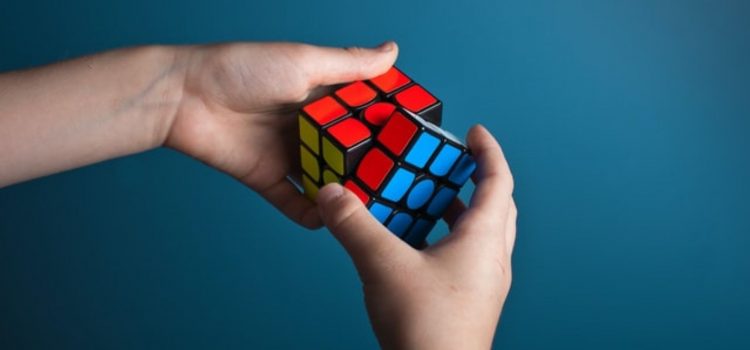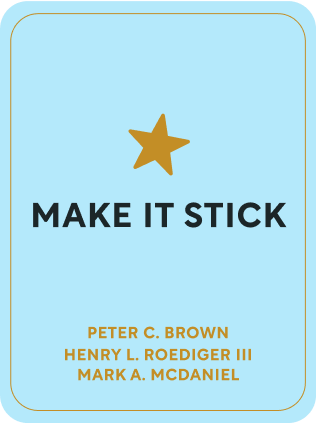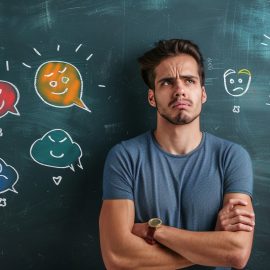

This article is an excerpt from the Shortform book guide to "Make It Stick" by Peter C. Brown, Henry L. Roediger III, Mark A. McDaniel. Shortform has the world's best summaries and analyses of books you should be reading.
Like this article? Sign up for a free trial here .
How do you measure intelligence? Do you think it’s possible to come up with an objective and all-encompassing metric of intelligence?
If the purpose of learning is to move through life more effectively, the measure of your intelligence should be how well you navigate each day. But, for many reasons, people want a way to quantify cumulative intelligence. There are several models of intelligence that people have developed to understand this.
Read more about the most famous and influential models of intelligence and how they compare.
The Two Types of Intelligence
Modern psychologists largely agree that there are at least two kinds of intelligence:
- Fluid intelligence is your capacity to think both logically and abstractly, understand how things relate, and keep relevant information front-of-mind while solving a problem.
- Crystallized intelligence is your library of knowledge about how the world works as well as the mental models you’ve created from your experiences.
Models of Intelligence
Historically, scientists have struggled to develop an objective measure of intelligence.
Various psychologists have theories that attempt to conceptualize intelligence. One of the most famous models of intelligence ia Howard Gardner’s multiple intelligences model which lists eight kinds of intelligence:
- Logical-mathematical: critical thinking, abstract thinking, and mathematical thinking
- Spatial: the ability to visualize things in your mind and to gauge three-dimensional spaces
- Linguistic: words and language
- Kinesthetic: body control
- Musical: sounds, tones, rhythms, and music
- Interpersonal: the ability to pick up on people’s mental and emotional states and work with them
- Intrapersonal: self-awareness and the ability to accurately judge your own knowledge and competence
- Naturalistic: the ability to relate to your natural surroundings (such as a hunter or gardener does)
Another example is Robert J. Sternberg’s three types of intelligence:
- Analytical: Solving the types of problems you find on an academic test
- Creative: Thinking outside the box to use what you know to create new ideas and solutions
- Practical: Adapting and applying new ideas and solutions in the varied contexts of daily life (street smarts)
In contrast to other theories, Sternberg’s model is supported by empirical research.
Sternberg did a study of children in Kenya that tested their practical knowledge of herbal medicines, which would help them in daily life, as well as their analytical knowledge, which helps them in school. Children who knew more about herbal medicines tended to perform worse at school, and vice versa. Sternberg reached the conclusion that the difference depended upon whether a child’s family valued and emphasized practical knowledge or academic (analytical) knowledge.
Sternberg’s study produced two important takeaways about traditional intelligence tests:
- They don’t factor in differences in environment. A student’s lack of exposure or support in a certain area of information doesn’t reflect a lack of ability.
- They measure what people know at the time they take the test. People learn continually throughout their lives, and intelligence tests indicate nothing about test-takers’ ability or potential to learn more.
Sternberg’s Dynamic Testing
In order to improve upon the shortcomings of traditional tests, Sternberg and Elena Grigorenko developed dynamic testing. The premise of dynamic testing is that people constantly learn and raise their competence, so dynamic testing accounts for and contributes to that continual improvement.
Dynamic testing is a multistep process that involves:
- Testing to measure your level of ability
- Redoubling efforts to improve in the areas where you performed poorly on the test
- Retesting to measure improvement
- Repeating the process
Instead of interpreting low test scores as inability, dynamic testing frames them as areas that simply need more attention. Additionally, dynamic testing is a better indicator of students’ potential to learn, rather than their past learning.
Your IQ Isn’t Fixed
When it comes to gauging intelligence, many people default to the IQ test, which measures logical and verbal ability.
Contrary to what many people think, your IQ isn’t predetermined. In fact, Americans’ average IQ has risen over time, likely because of changes in nutrition, schools, and culture.
Several factors affect IQ scores, including:
- Genes:
- Environment: A small genetic advantage can be multiplied in an environment that supports learning. For example, if two students are comparably intelligent but one is part of a family that has a home library and goes to a school that offers many types of classes and clubs, her learning will be nurtured and her intelligence will expand exponentially.
- Socioeconomic status: In more affluent families, the parents tend to have higher levels of education as well as jobs that give them more resources to support their children’s learning.
- Nutrition: Certain vitamins and nutrients support the brain’s health and boost its capacity for learning. Specifically, fatty acids aid nerve cell development and the formation of new synapses. Studies showed babies’ IQ scores were 3.5 to 6.5 points higher if they were exposed to fatty acid supplements directly or through their pregnant or breastfeeding mothers.
Can You Improve Your Fluid Intelligence?
IQ measures fluid and crystallized intelligence. Science hasn’t proven that you can improve your fluid intelligence.
Working memory is a key aspect of fluid intelligence, and that’s what brain training games, videos, and exercises aim to improve. Brain training methods are largely based on a 2008 Swiss study in which participants had to remember two different kinds of information—a number sequence and the location of a small light—for increasingly longer intervals while they viewed other lights and number sequences.
All the participants improved on this task by the end of the experiment, and those who’d done the exercise the most had the biggest improvements. This was the first time research suggested people could improve their fluid intelligence. However, there were several issues with the study.
- Participants did just one task, which makes it impossible to know whether the participants improved their working memories or merely improved their performance on this task. Improving one skill doesn’t affect other skills; a professional pianist’s superior dexterity on the keys has no impact on her dexterity when crocheting a scarf.
- There’s no data about whether the improvement was long-term.
- The sample size was small (35 people) and not diverse.
- No other experiment has been able to replicate the results.
Although the participants may not have actually improved their fluid intelligence, they left the study feeling like they’d strengthened their mental capacity. This effect was merely the participants’ perception, but higher confidence does correlate with more perseverance. In other words, when the participants encounter a problem, their chance of success will be higher—not because they’ve made mental improvements, but because their confidence will make them try harder to solve it.

———End of Preview———
Like what you just read? Read the rest of the world's best book summary and analysis of Peter C. Brown, Henry L. Roediger III, Mark A. McDaniel's "Make It Stick" at Shortform .
Here's what you'll find in our full Make It Stick summary :
- How to understand and remember what you learn
- How a little forgetting helps you remember
- Why you’re not a good judge of how much you know






